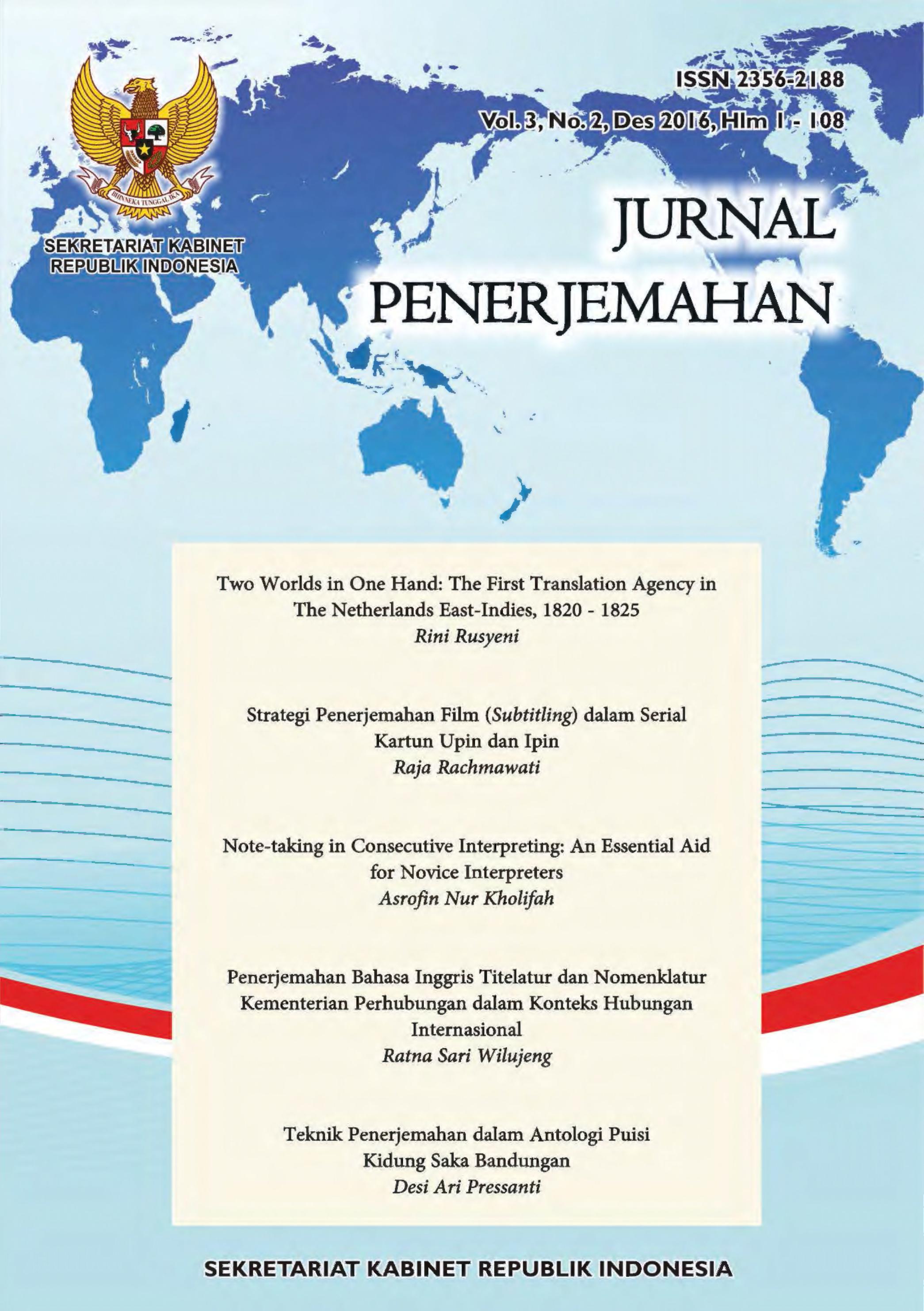Note-taking in Consecutive Interpreting: An Essential Aid for Novice Interpreters
Abstract
This paper is aimed at describing note taking in consecutive interpreting as an effort as well as important aid for novice interpreters. Interpreting occurs when one person transfers message orally that he or she hears into another language. This could be done either simultaneously or consecutively. In consecutive interpreting, the interpreter listens to a speech while taking notes. When the speaker has finished, the interpreter stands up and delivers the speech in his/her native language. Note taking becomes the core of the process of rendering message from source language into target language and beneficial to assist interpreters during his/her performance in delivering the message. Several symbols and codes are then used by interpreters. One interpreter to another could probably have different symbols for representing the same item. Conventionally, several symbols are applied by interpreters worldwide. They cover abbreviation of linking words, negation, underlining stressing, symbols of expression, number, movement, correspondence and some other. Nevertheless, according to the practical conditions and making the best use of some basic principles concerning note-taking in consecutive interpreting, the beginners can develop good note-taking skills, which can be regarded as his or her own note-taking system.
Keywords: note taking, consecutive interpreting, aids, novice interpreter.

